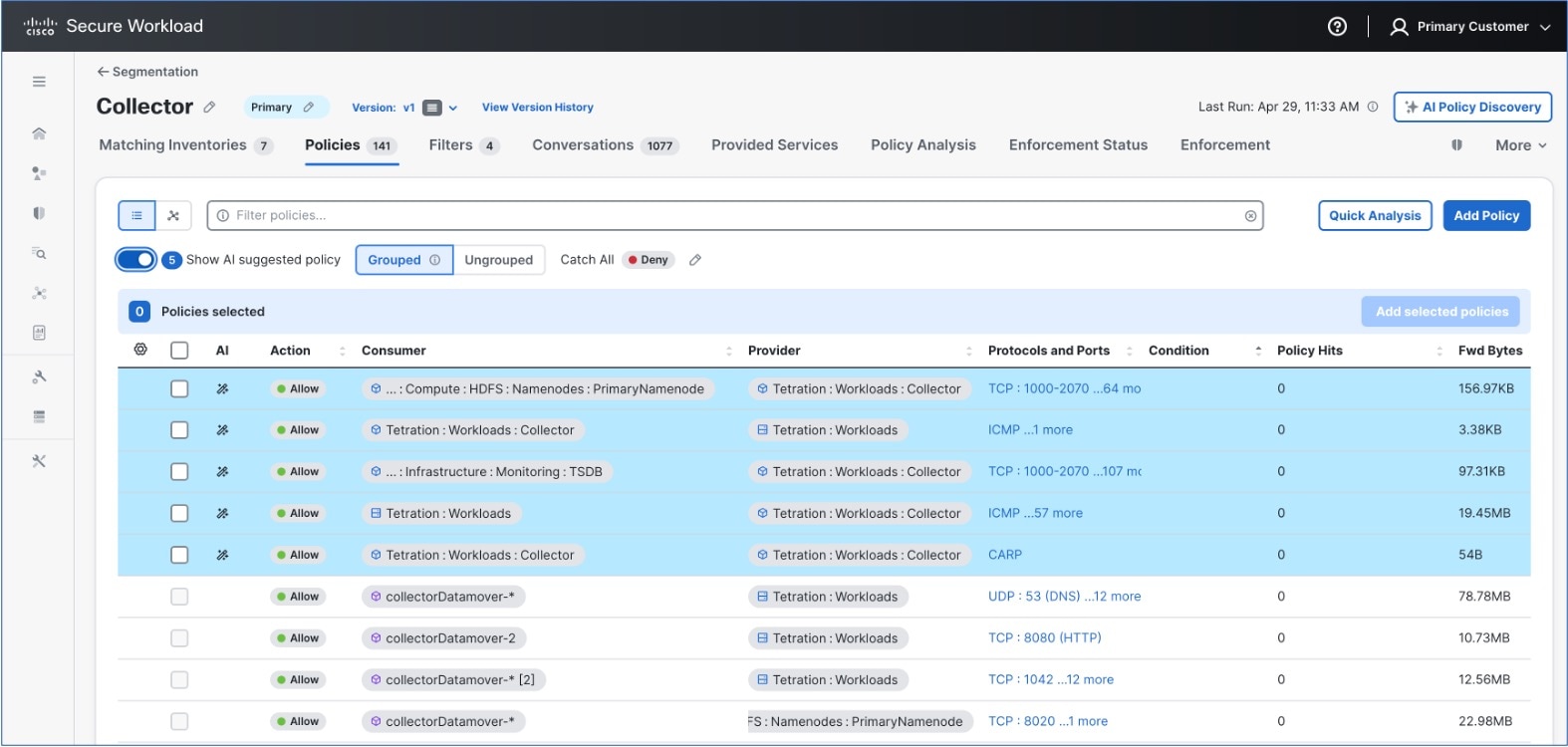AI Policy Suggestions for Workspaces
The Secure Workload AI engine helps to maintain workspaces in an optimal state by reducing configuration errors and ensures security compliance with consistent and continuous classification of workloads. The AI engine also has the capability to replace existing policies for the workspaces if any policy has not been selected for enforcement for a considerable amount of time.
Prerequisites for AI Policy Suggestions
-
Ensure that the workspace is the primary workspace, not the secondary workspace, for the AI engine to suggest policies for workspaces.
-
Set the policy enforcement to Catch All-Deny.
Limitations for AI Policy Suggestions
-
Note that AI Policy Suggestions consider the Advanced Policy discovery configurations that were created earlier when suggesting policies for a workspaces.
-
AI Policy Suggestions can be turned off per Variable Refrigerant Flow (VRF) if required.


 Feedback
Feedback